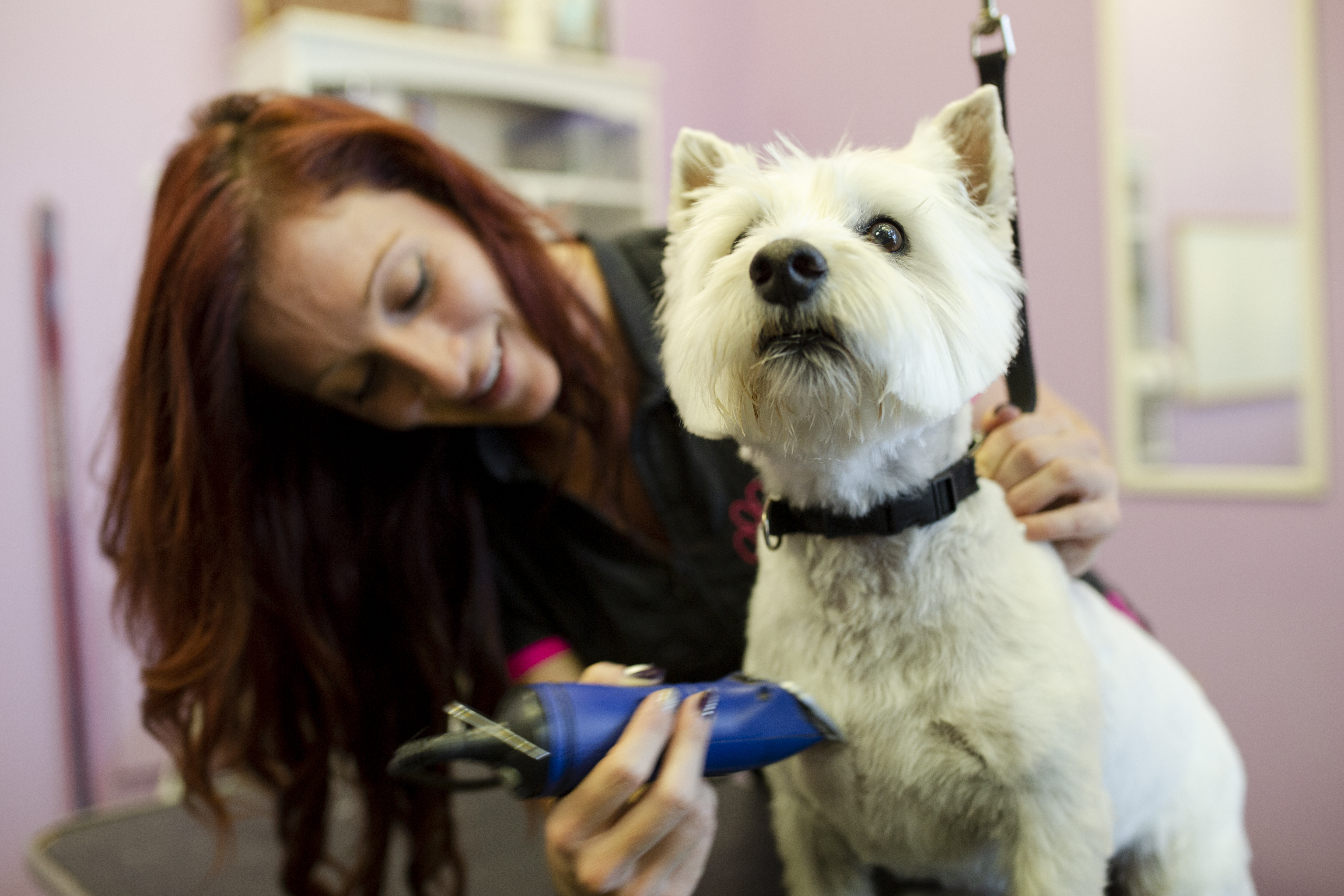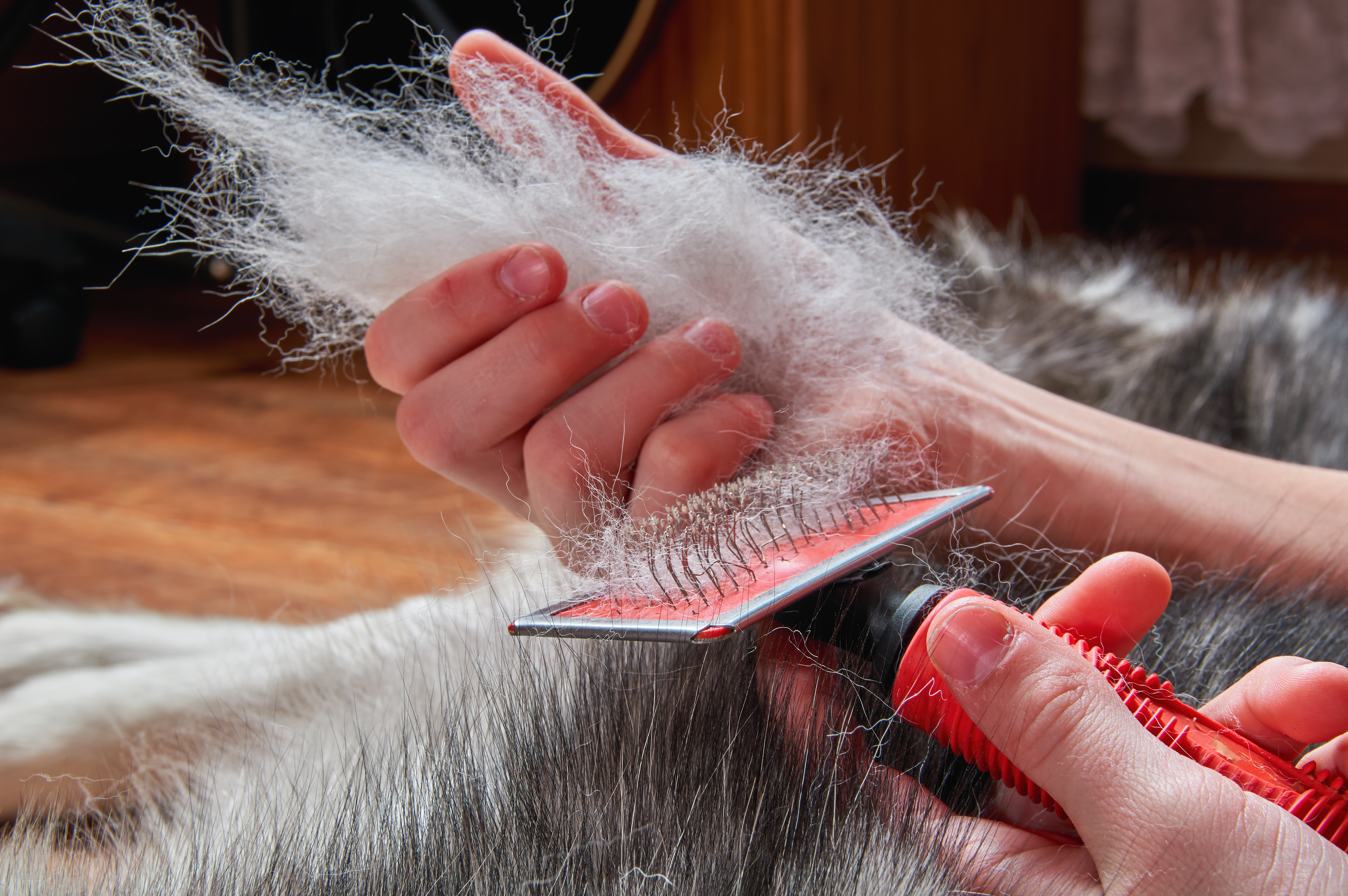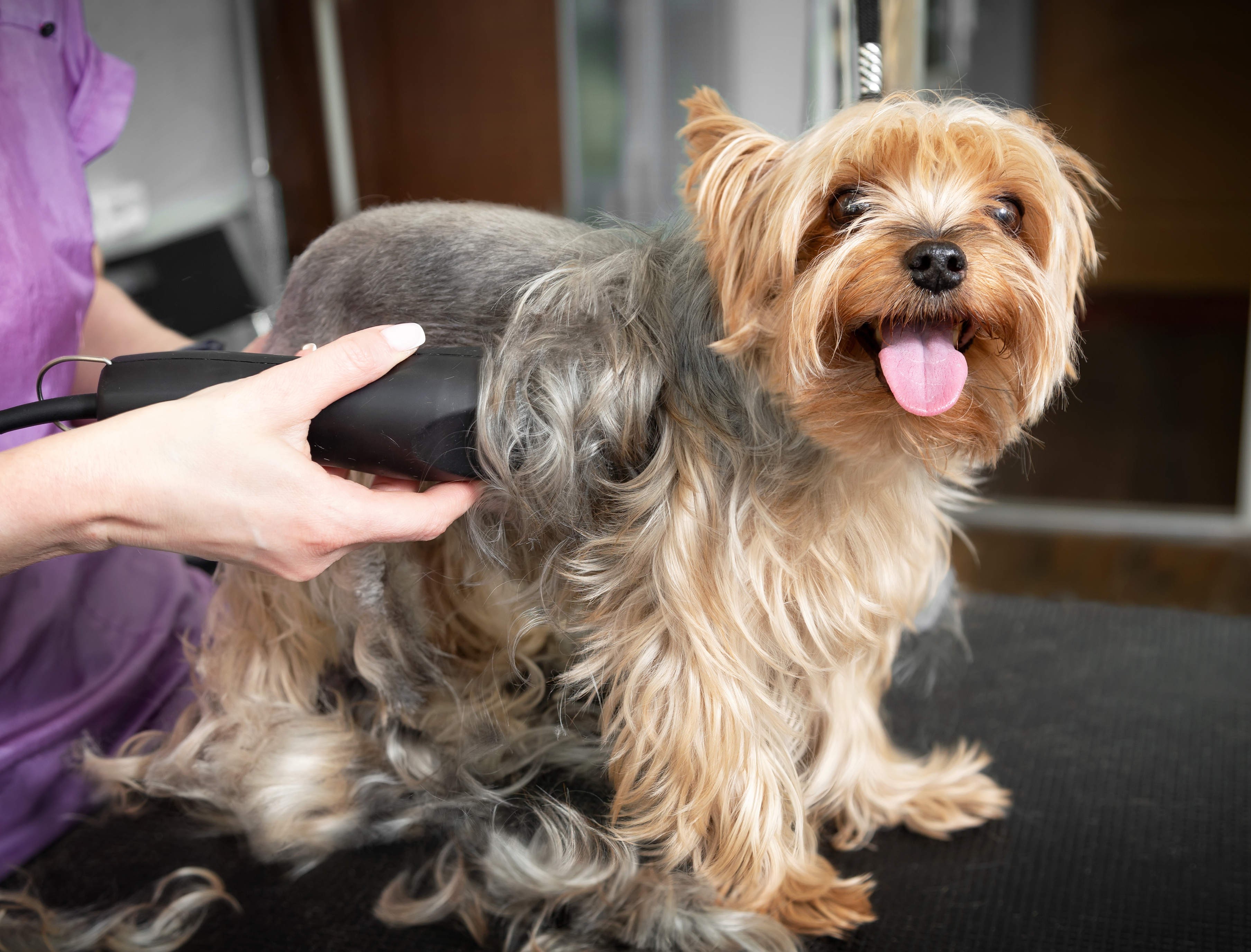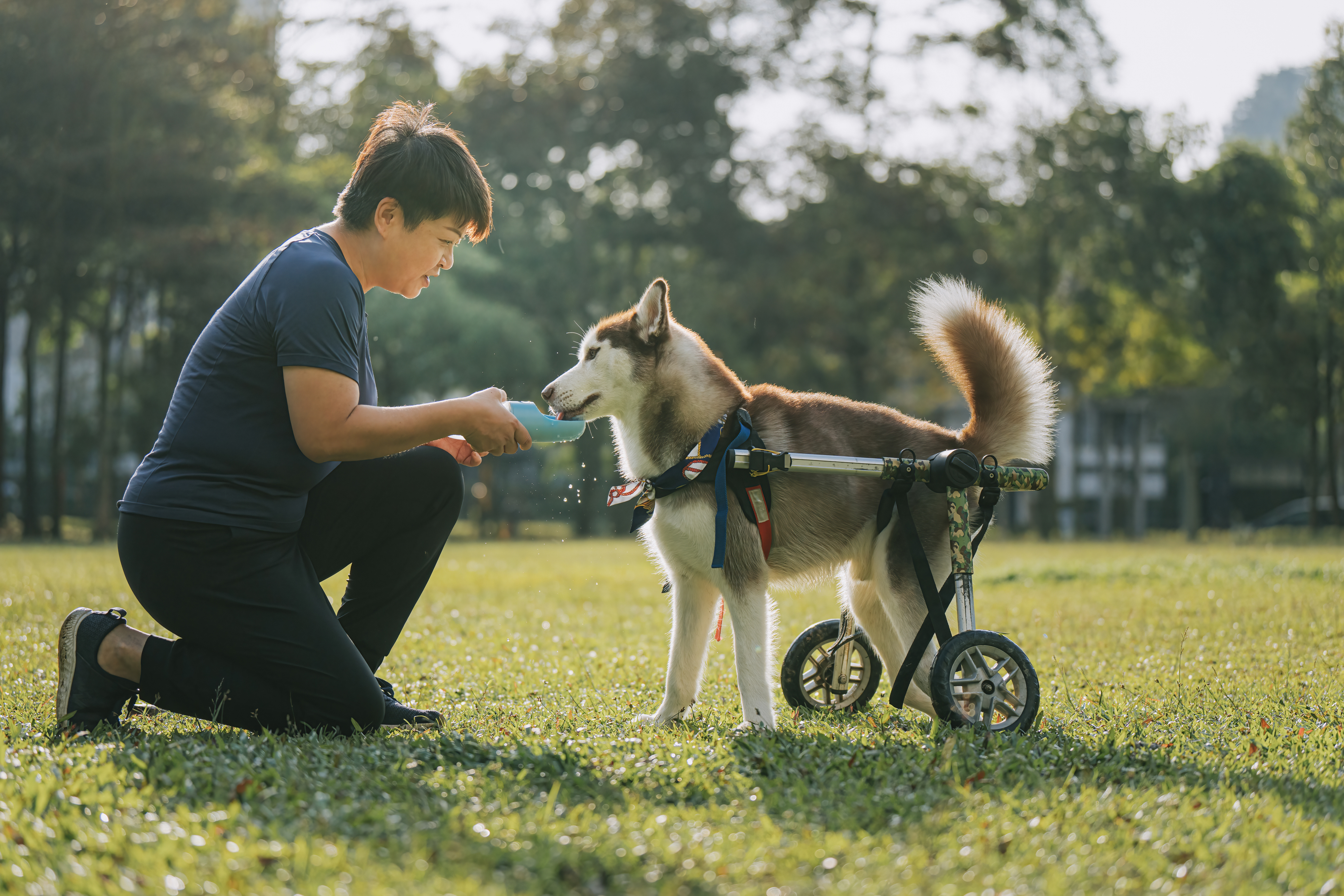Is It Ever Okay To Shave Your Dog’s Coat for the Summer?
Doctor of Veterinary Medicine

While efforts are made to answer all questions as quickly as possible, if an immediate answer is required or if your pet is in need of urgent or emergency care, contact your pet's veterinarian immediately.
Doctor of Veterinary Medicine

You will receive an answer from Dr. Lindsay and our vet/tech team as soon as possible, usually the same day.
All answers are provided for informational or educational purposes only, and are intended to be a supplement to, and not a substitute for, the expertise and professional judgment of your pet's veterinarian.
It may be necessary to consult your pet's veterinarian regarding the applicability of any opinions or recommendations with respect to your pet's symptoms or medical condition.
CloseDoctor of Veterinary Medicine

An error has occurred, please reload the page and try again.
CloseWhile efforts are made to answer all questions as quickly as possible, if an immediate answer is required or if your pet is in need of urgent or emergency care, contact your pet's veterinarian immediately.
There is no answer related to your question

The West Highland White Terrier has a wiry double coat that groomers recommend against shaving, though many pet parents prefer the sleek look and low maintenance of a short clip.
If you have a double-coated dog, your groomer might have warned you against shaving their coat for the summer. But as the temperatures rise, you might wonder if your pet is uncomfortable in their thick, heavy coat.
Learn why a short summer clip usually isn’t recommended for double coats and what you can do instead to keep your dog cool for the summer.
What’s The Difference Between A Top Coat and an Undercoat?
Dogs with a double coat, which consists of a topcoat and an undercoat, do not typically get regular haircuts, and groomers usually advise against shaving them for the summer.
The top coat is made up of coarse, long guard hairs that are wind- and water-resistant and provide UV protection. It’s like a raincoat or wind breaker that you might wear over a soft sweater. The topcoat is usually darker and more vibrant, while the undercoat is dull in color.

The undercoat is only found in dogs with a double coat. If your dog has an undercoat, you’ll be able to see the short, downy hairs when you gently brush their top coat against the direction of growth. You’ll also pull up clouds of downy undercoat when you brush your dog during shedding season.
What Happens When You Clip A Double-Coated Dog?
Your dog’s top coat has a long growth cycle. It behaves similarly to human hair in that it slowly grows and falls out in cycles year-round. This is why a single coat, which only consists of a top coat, is sometimes referred to as a “hair coat.”

Yorkies and other single-coated breeds lack an undercoat.
Your dog’s undercoat, meanwhile, has a short growth cycle of just six months. In the springtime, your dog sheds their thick, dense undercoat that kept them warm all winter. In its place grows a lighter undercoat that provides insulation, trapping cool air close to your dog’s skin. In the fall, they shed their summer undercoat to make room for their thick, winter undercoat.
When you clip a double-coated dog, you’re cutting down the top coat, which takes much longer to grow. Meanwhile, their fast-growing undercoat will grow back quickly. That’s why it’s so common for double-coated dogs to look patchy in the months following a haircut.
How Does An Unclipped Double Coat Help Your Dog Stay Cool?
In the summer heat, most of us feel cooler when we’re wearing as few layers of clothing as possible. For humans, our primary way of staying cool is by sweating. Clothes can prevent the cooling process, in which sweat evaporates from our skin.
Dogs, though, do not have sweat glands all over their body like we do. Their primary way of staying cool is through panting, which allows moisture to evaporate off their tongue. In dogs with a double coat, their insulating undercoat is another way to help regulate their body temperature.
A dog’s double coat can be compared to the long, loose-fitting clothing commonly worn by humans in arid climates. Like loose-fitting clothing, your dog’s top coat shields their skin from the sun, while their undercoat provides insulation, slowing down the transfer of heat from the air to the dog’s body.
That’s why a short clipped haircut, which removes the UV-protective topcoat and some of the insulating undercoat, can actually make your dog feel hotter in the summer.
Do Double Coated Dogs Ever Get Hot in the Summer?
While a double-coat does offer some benefits, it will not, alone, keep your dog cool in the summer. Proper grooming can keep your dog’s double coat light and fluffy so it won’t make them feel overheated.
Without frequent brushing, the undercoat can remain trapped close to the skin. It can also become matted. Dead hair and matts can block airflow and obstruct the insulating, cooling nature of the undercoat.
To keep your dog’s double coat from weighing them down this summer, make sure to brush every few days or as recommended by your groomer or veterinarian. Provide appropriate care according to your dog’s coat type. For those with a wiry coat texture, this can mean hand-stripping and/or carding. For other types, frequent brushing and deshedding can keep the undercoat light and breezy.
If you’re still concerned that your dog’s double coat is too heavy for the summer, your groomer may suggest a sanitary trim, belly shave, scissor trim, or other techniques to lighten their coat without compromising their coat quality.

No matter their coat type, all dogs should be monitored in the summer heat and given plenty of cool, fresh water.
Is It Ever Okay To Shave Your Dog’s Coat?
While it’s usually not necessary or beneficial to shave a dog’s coat for the summer, there are a few exceptions to these guidelines.
• For elderly or disabled pets, a short-clipped coat can be easier to keep clean, especially in pets that have frequent accidents.
• For hunting or working dogs, a partial clip can prevent dangerous foxtails, fleas and ticks, and plants with sticky burrs from getting stuck in the coat. It may not be necessary to clip the entire coat, instead focusing on the paws, legs, hindquarters, and belly.
• Lastly, for pet parents that prefer a short clip, and do not mind a patchy regrowth period or intend to keep up with regular clipping, a short summer cut can be practical.
It’s not uncommon for pet parents to notice that their dog seems to feel cooler and more comfortable with a short summer cut, despite the insulating properties of their undercoat.
Every dog is different, and there’s more to body heat regulation than the perfect double coat. Despite the strongly-held grooming guidelines, you may simply notice that your dog is happier and more active with a short haircut.
Whether you keep your dog’s double coat long or still decide to go with a short summer cut, make sure they always have access to fresh, cool water, limit their time outside, and monitor for signs of sunburn and overheating.
VISION
Every pet deserves to live a long, happy, healthy life.
 Swipe
Swipe



























